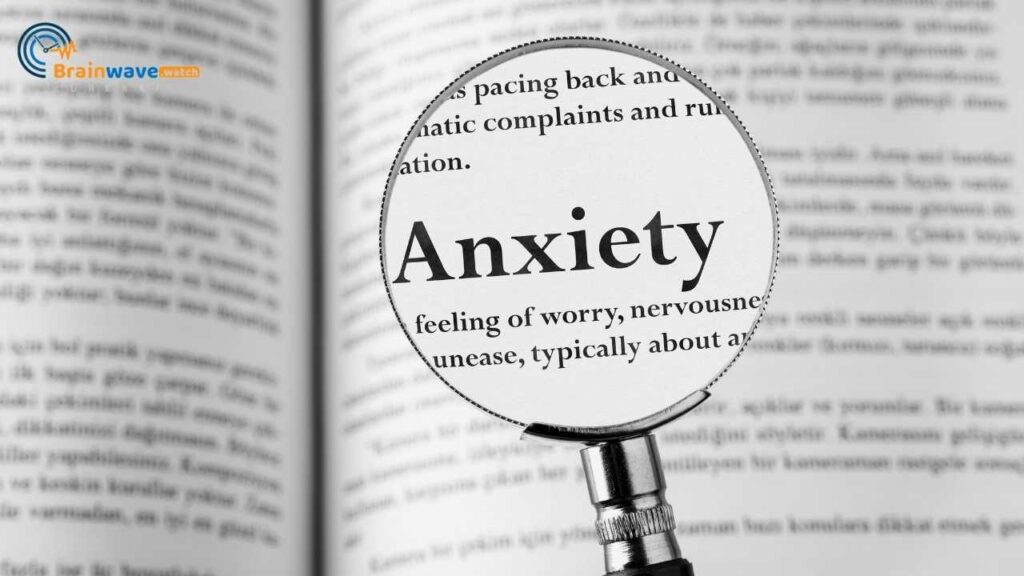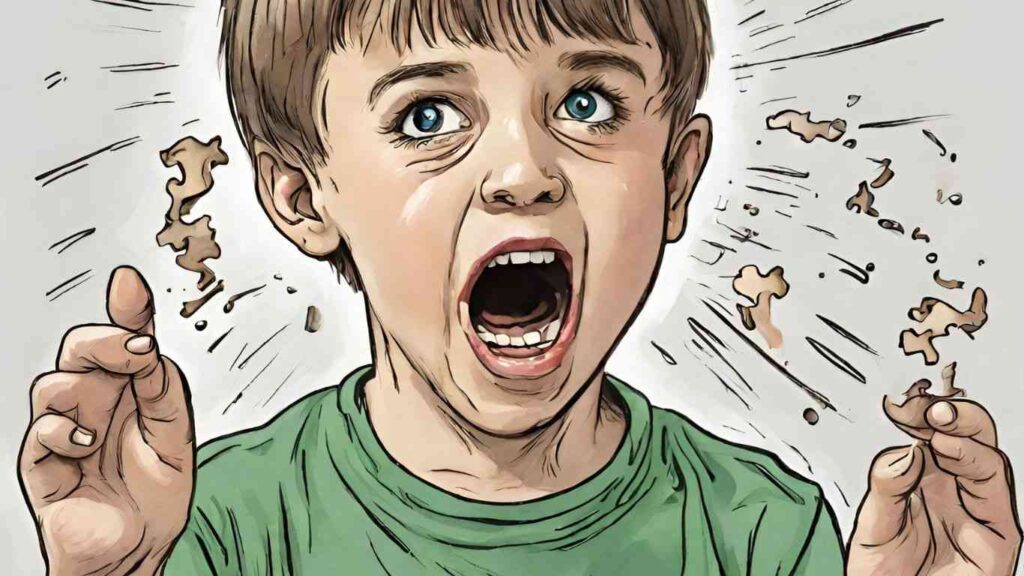Autism spectrum disorder (ASD) represents a range of neurodevelopmental conditions characterized by differences in social communication and repetitive behavioral patterns.
These patterns may manifest during early childhood development and persist throughout adulthood.
Hoarding in Clinical Context
Hoarding behavior is defined as the persistent difficulty discarding possessions, regardless of their actual value. This differs from hoarding disorder, which is a distinct psychiatric condition where accumulation of items significantly impairs living spaces and daily functioning.
Research Timeline
Scientific investigation into the connection between autism and hoarding behaviors began in the 1990s. Initial studies focused primarily on repetitive behaviors in autism, with hoarding emerging as a significant area of research interest by the early 2000s.
Clinical and Public Health Relevance
- Diagnostic challenges due to symptom overlap
- Increased burden on healthcare resources
- Need for specialized intervention strategies
The intersection of autism and hoarding behaviors presents substantial challenges for healthcare providers in accurate diagnosis and treatment planning.
Current research indicates that approximately 15-30% of individuals with autism exhibit significant hoarding behaviors.
Diagnostic Considerations
The assessment process requires careful differentiation between autism-related collecting behaviors and clinical hoarding disorder.
This distinction affects treatment approaches and resource allocation within healthcare systems.
Diagnostic Criteria and Clinical Presentation
ASD Diagnostic Criteria
The Diagnostic and Statistical Manual of Mental Disorders (DSM-5) establishes specific criteria for Autism Spectrum Disorder (ASD).
These criteria comprise persistent deficits in social communication and social interaction across multiple contexts, along with restricted, repetitive patterns of behavior, interests, or activities.
- Social communication and interaction deficits manifest through:
- Difficulties in social-emotional reciprocity
- Impaired nonverbal communicative behaviors
- Challenges in developing and maintaining relationships
Behavioral patterns must be present in early developmental periods, though symptoms may not become fully apparent until social demands exceed limited capacities.
These patterns cause clinically significant impairment in social, occupational, or other important areas of functioning.
Hoarding Behavior Characteristics
The DSM-5 defines hoarding disorder as persistent difficulty discarding possessions, regardless of their actual value. This difficulty results in the accumulation of items that congest living areas and substantially compromise their intended use.
- Primary characteristics include:
- Perceived need to save items
- Distress associated with discarding
- Excessive accumulation leading to cluttered spaces
Autism-Specific Hoarding Features
In the context of autism, hoarding behaviors often present differently from typical hoarding disorder. These behaviors frequently align with special interests and may serve distinct functions related to sensory processing or emotional regulation.
- Distinctive features in autism include:
- Collection of specific categories of objects
- Systematic organization patterns
- Strong emotional attachment to items related to special interests
| Characteristic | Typical Hoarding Presentation | Autism-Specific Presentation |
|---|---|---|
| Accumulation of possessions | Hoarding of a large number of varied items, often of little to no value. Items may include newspapers, coupons, books, or other objects. | May hoard specific items related to their special interests. The focus tends to be more narrow and specific. |
| Distress and functional impairment | Intense distress when faced with discarding items. Hoarding can lead to significant functional impairment including unsanitary conditions or inability to use rooms in the home for their intended purpose. | May not always feel distress when items are discarded, although some individuals may. Hoarding may not cause as much functional impairment, unless the individual has a large quantity of items or the items interfere with daily tasks. |
| Insight | Poor insight into the problematic nature of their hoarding behaviors. Often they see their habit as beneficial or necessary. | Often have good insight into their behaviors and understand that others may see the behavior as unusual. However, insight varies among individuals. |
| Need for perfectionism | Large emphasis on not making mistakes. Sufferers often express a fear of losing important information and feel compelled to keep items “just in case”. | Perfectionism may manifest as needing to have the complete collection of an item, or in controlling the order and arrangement of hoarded items. |
| Anxiety and indecisiveness | High levels of anxiety and indecisiveness about discarding items. Can cause extreme distress. | May have less anxiety related to discarding items, but may be upset if their collection is disturbed, or a routine around the items is broken. |
The relationship between autism and hoarding behaviors requires careful clinical differentiation, as interventions may need modification based on the underlying mechanisms driving the behavior.
Neurobiological and Cognitive Factors
Executive Functioning
Research has demonstrated significant correlations between autism-related executive functioning variations and hoarding behaviors.
Studies indicate that executive function differences can manifest in specific ways that may influence tendencies toward object accumulation.
Decision-Making Processes
Individuals with autism often exhibit distinct patterns in decision-making processes, particularly when evaluating object retention. Research suggests these variations can result in:
- Extended decision-making time frames
- Increased cognitive load during sorting tasks
- Difficulty in categorizing items by utility or value
Cognitive Flexibility
Studies have documented reduced cognitive flexibility in some individuals with autism, which may contribute to hoarding behaviors through:
- Rigid thinking patterns about object usefulness
- Difficulty adapting to changes in organizational systems
- Challenges in modifying established routines
Sensory Processing
Sensory processing differences represent a crucial factor in understanding hoarding behaviors within autism. Research has identified specific patterns that may influence object accumulation and retention.
Sensory Sensitivity Patterns
- Heightened tactile sensitivity to specific textures
- Visual processing differences affecting object recognition
- Sensory-seeking behaviors leading to object collection
Object Attachment Mechanisms
Research indicates that sensory processing differences can lead to stronger object attachments through:
- Enhanced sensory memories associated with specific items
- Comfort-seeking behaviors through familiar objects
- Reduced ability to distinguish between necessary and unnecessary items
Emotional Regulation
Studies have shown that emotional regulation differences in autism can significantly influence hoarding behaviors through various mechanisms.
Anxiety and Stress Responses
- Increased anxiety when attempting to discard items
- Stress responses during organizational tasks
- Emotional dysregulation during decision-making processes
Object-Related Emotional Patterns
Research has identified specific emotional patterns related to object attachment in individuals with autism:
-
- Strong emotional associations with specific items
- Difficulty processing separation from objects
- Heightened emotional responses to changes in object arrangement
Impact on Daily Functioning
Home Environment
Living Space Organization
The accumulation of items in hoarding behaviors associated with autism spectrum conditions can lead to significant challenges in maintaining organized living spaces.
Research indicates that up to 73% of individuals with both autism and hoarding tendencies experience difficulty with basic household navigation and functionality.
- Reduced access to essential areas like kitchens and bathrooms
- Limited usable surface areas for daily activities
- Compromised ventilation and air quality
Safety Concerns
The combination of hoarding behaviors and autism-related sensory processing differences can create multiple safety risks within the home environment. Studies have documented increased risks of:
- Fire hazards due to blocked exits and flammable material accumulation
- Fall risks from unstable item stacks
- Sanitation issues affecting health and wellbeing
Family Dynamics
Research demonstrates that hoarding behaviors in individuals with autism can significantly impact family relationships and household functioning.
Studies report elevated stress levels among family members and caregivers, with particular challenges in:
- Maintaining shared living spaces
- Managing household routines
- Addressing conflicting needs for organization versus item preservation
Social Implications
Relationships
Social relationships often face substantial challenges when hoarding behaviors are present alongside autism. Research indicates reduced social interaction opportunities and increased isolation due to:
- Reluctance to invite others into living spaces
- Difficulties maintaining reciprocal relationships
- Social anxiety related to hoarding behaviors
Educational and Occupational Impact
Academic and work performance can be affected by the combination of autism and hoarding behaviors. Studies have identified several key areas of impact:
- Challenges with workspace organization
- Difficulty meeting deadlines due to organizational issues
- Increased anxiety in structured environments
Community Participation
Research shows that community engagement often becomes limited when hoarding behaviors are present in individuals with autism. Observable effects include:
- Reduced participation in community activities
- Limited access to public spaces
- Increased social isolation and withdrawal
Assessment Tools and Methods
The evaluation of hoarding behaviors in individuals with autism spectrum conditions requires specialized assessment tools and methodologies that account for the unique characteristics of both conditions.
Standardized Assessments
Standardized assessment tools provide quantifiable measures for evaluating hoarding behaviors and their severity. These instruments have been validated through research and offer consistent evaluation metrics.
Hoarding Rating Scale
The Hoarding Rating Scale (HRS) consists of five primary components that measure clutter, difficulty discarding, acquisition, distress, and impairment.
When used with autistic individuals, the scale’s implementation often requires modifications to account for sensory processing differences and special interests.
- Clutter volume assessment
- Acquisition patterns evaluation
- Impact on living spaces measurement
- Functional impairment analysis
Yale-Brown Obsessive Compulsive Scale
The Yale-Brown Obsessive Compulsive Scale (Y-BOCS) measures the severity and types of obsessive-compulsive symptoms, including those related to hoarding. The scale has been adapted to include autism-specific considerations.
Autism-Specific Adaptations
Assessment tools modified for autism incorporate considerations for:
- Sensory processing variations
- Communication preferences
- Executive functioning differences
- Special interest considerations
Clinical Interviews
Clinical interviews form an essential component of the assessment process, providing qualitative data and contextual information about hoarding behaviors.
Structured Interview Protocols
- Standardized question sequences
- Behavioral observation protocols
- Sensory processing assessments
- Executive function evaluations
Family Assessment Components
Family-based assessments examine the impact of hoarding behaviors on household dynamics and daily functioning. These evaluations include:
- Family interaction patterns
- Impact on shared living spaces
- Support system analysis
- Safety considerations
Environmental Evaluation
Environmental assessments examine the physical manifestations of hoarding behaviors through:
- Room-by-room analyses
- Safety hazard identification
- Living space functionality assessment
- Organization pattern evaluation
Evidence-Based Intervention Strategies
Cognitive Behavioral Approaches
Research indicates that modified cognitive behavioral therapy (CBT) protocols demonstrate significant effectiveness in addressing hoarding behaviors among individuals with autism spectrum conditions.
These modifications incorporate autism-specific considerations to enhance therapeutic outcomes.
Modified CBT for Autism
Modified CBT protocols incorporate the following autism-specific adaptations:
- Concrete, structured approaches to decision-making
- Visual decision-making tools
- Extended processing time for sorting tasks
- Clear, specific behavioral goals
Exposure and Response Prevention
Studies have demonstrated the effectiveness of graduated exposure techniques in managing acquisition and discarding behaviors. This approach systematically introduces:
- Structured sorting exercises
- Gradual exposure to discarding items
- Anxiety management techniques
- Progressive resistance training
Skills Training
Evidence supports the implementation of specific skill development programs focusing on:
- Decision-making frameworks
- Categorization strategies
- Time management techniques
- Organizational methods
Environmental Modifications
Research validates the importance of environmental adaptations in supporting behavioral interventions for hoarding tendencies in autism.
Organization Systems
Evidence-based organizational interventions include:
- Color-coded storage systems
- Labeled containers and spaces
- Systematic categorization methods
- Regular maintenance schedules
Visual Supports
Studies demonstrate the effectiveness of visual aids in maintaining organizational systems:
- Photographic inventories
- Visual schedules for maintenance
- Picture-based sorting guides
- Visual boundaries for storage areas
Sensory Considerations
Research emphasizes the importance of addressing sensory factors through:
- Appropriate lighting modifications
- Sound reduction strategies
- Texture-conscious storage solutions
- Temperature and ventilation control
Support Strategies for Families and Caregivers
Research indicates that structured support systems play a vital role in managing hoarding behaviors in individuals with autism spectrum disorder (ASD).
Evidence-based approaches emphasize the importance of comprehensive training and resource utilization for optimal outcomes.
Education and Training Components
Behavioral Understanding
Clinical studies demonstrate that caregivers who receive specialized training in autism-related hoarding behaviors show improved ability to implement effective interventions. Key educational components include:
- Recognition of behavioral triggers and patterns
- Assessment of item attachment significance
- Identification of sensory processing factors
- Understanding of executive functioning challenges
Implementation Protocols
Evidence-based implementation strategies focus on systematic approaches to behavior management. Research-supported methods include:
- Structured organization systems
- Visual scheduling techniques
- Gradual decluttering processes
- Positive reinforcement protocols
Crisis Response Protocols
Studies indicate that predetermined crisis management strategies reduce negative outcomes during behavioral escalations. Essential elements include:
- De-escalation techniques
- Safety planning procedures
- Emergency response protocols
- Documentation methods
Resource Development Framework
Support Network Development
Research demonstrates that participation in structured support groups correlates with improved caregiver outcomes. Effective support systems typically include:
- Peer-to-peer mentoring programs
- Facilitated group discussions
- Online support communities
- Family counseling services
Professional Collaboration
Studies show that establishing connections with qualified professionals enhances treatment effectiveness. Key professional resources include:
- Occupational therapists
- Behavioral specialists
- Mental health professionals
- Organization experts
Community Resource Integration
Research indicates that utilization of community resources strengthens support systems. Essential community components include:
- Local autism support organizations
- Special education services
- Respite care programs
- Social skills groups
Future Research Directions in Autism and Hoarding Behaviors
Research Gaps and Priorities
The relationship between autism spectrum conditions and hoarding behaviors remains an under-researched area with significant knowledge gaps requiring systematic investigation.
Neurobiological Understanding
Current neurobiological research has not fully established the neural mechanisms underlying hoarding behaviors in autistic individuals. Brain imaging studies have been limited in scope and sample size.
- Limited neuroimaging data on executive function differences
- Insufficient research on neurotransmitter systems
- Need for larger-scale longitudinal brain studies
Treatment Evidence Base
The efficacy of existing interventions requires more rigorous evaluation through controlled trials and systematic reviews. Current treatment approaches lack autism-specific modifications and validation.
- Limited randomized controlled trials
- Absence of comparative effectiveness studies
- Need for autism-adapted intervention protocols
Long-term Outcome Studies
Research on the developmental trajectory and long-term impacts of hoarding behaviors in autism remains sparse. Longitudinal studies tracking natural progression and intervention effects are needed.
Innovative Research Approaches
Novel Intervention Development
Research is advancing toward new therapeutic approaches incorporating sensory processing and executive function supports. Digital health technologies show promise for assessment and intervention delivery.
- Virtual reality exposure therapy applications
- Cognitive remediation programs
- Sensory integration protocols
Technology Integration
Digital tools and artificial intelligence are enabling new research methodologies and intervention delivery methods. Smart home technologies offer opportunities for monitoring and supporting behavior change.
- Machine learning for pattern recognition
- Remote monitoring systems
- Digital organizational aids
Prevention Research
Early identification and prevention studies are examining risk factors and early indicators of problematic object attachment and accumulation behaviors. Environmental modification strategies are being evaluated for preventive potential.
- Early screening tool development
- Environmental adaptation research
- Parent training program evaluation
Resources and Professional Support Options
Clinical Resources
Treatment Providers
Mental health professionals specializing in both autism spectrum conditions and hoarding behaviors offer specialized support services.
Board-certified behavior analysts (BCBAs), occupational therapists, and clinical psychologists with relevant expertise can be located through professional databases maintained by organizations such as the International OCD Foundation and the Autism Society of America.
Assessment Tools
Standardized assessment instruments are utilized by clinical professionals to evaluate hoarding behaviors in autistic individuals. These include:
- The Saving Inventory-Revised (SI-R)
- Clutter Image Rating Scale (CIR)
- Activities of Daily Living for Hoarding Scale (ADL-H)
- Yale-Brown Obsessive Compulsive Scale (Y-BOCS)
Training Programs
Evidence-based training programs are available for both professionals and families. These programs focus on organizational skills, decision-making processes, and behavioral modification strategies specific to hoarding tendencies in autistic individuals.
Support Networks
Professional Organizations
Several organizations provide resources and referral services:
- The International OCD Foundation Hoarding Center
- The Autism Research Institute
- The National Association of Professional Organizers
- Local autism support organizations
Online Resources
Digital platforms offer accessible information and support options:
- Virtual support groups
- Educational webinars
- Resource libraries
- Professional directories
- Mobile applications for organization and habit tracking
Community Services
Local community resources often include:
- Municipal health department programs
- Social service agencies
- Professional organizing services
- Support groups
- Educational workshops







